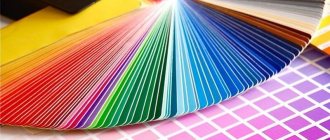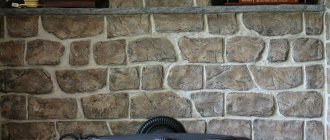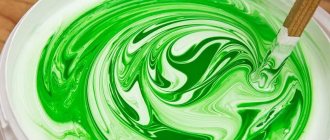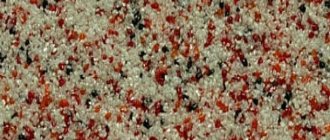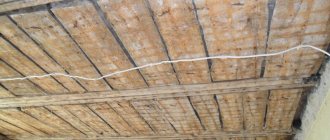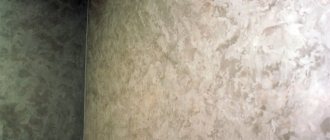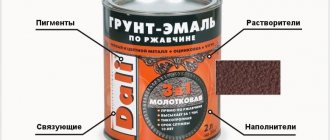Main characteristics of silk effect paint
Silk effect paint from Decorazza is made exclusively on the basis of a special acrylic binder. This base makes the paint material not only beautiful from an aesthetic point of view, but also environmentally friendly. Decorazza products do not contain harmful solvents, but the list of its benefits does not end there. Those who have at least once encountered silk paint for walls know that it:
- has high resistance to moisture;
- not afraid of temperature changes;
- vapor permeable - this property prevents the appearance of fungus or mold;
- dries quickly;
- presented in a variety of shades (including natural);
- easy to apply to any properly prepared surface;
- has a long service life.
Nevertheless, the main advantage of silk-effect wall paint can be seen in the photo. All people, without exception, remain completely delighted with the appearance of the finished coating. Smooth color transitions and unusual tints create an imitation of natural silk. This allows you to use paint in various stylistic directions of the interior, be it classic or minimalism. At the same time, when applying paint with a wet silk effect, the surfaces of a wall or ceiling can initially be given one or another relief or unusual texture.
How to do silkscreen painting
Various effects are possible for decorative silk coverings. To do this, you just need to choose the appropriate application method. There are only three options: wet, compressed and classic silk. Let's consider the application technology of each type.
Wet silk effect
The silk layer obtained through the use of this technology ultimately
the first stage is applying the base layer
provides the view with an absolutely unique coating, which from different angles has different patterns and shades.
Application consists of the following steps:
- Apply 2 layers of primer to the prepared surface, the second stage is to apply a pattern with a sponge,
which should dry for several hours; - Using a Venetian trowel, apply the base coat and allow time (4 hours) to dry;
- Using the same Venetian trowel, apply a layer of liquid silk in a circular motion, while applying pressure on the tool.
Squeezed silk effect
This technology makes it possible to obtain surfaces with an unusual iridescent pattern. Let's consider the step-by-step application technology:
- Apply 2 coats of surface primer. Allow several hours to dry;
- Apply the base layer over the primer using a special velor roller. Leave for 3 hours to dry completely;
- Using a sponge, apply wet silk using pointed movements. Allow the silk to dry a little, for about 20 minutes;
- Using a plastic spatula, start smoothing the paint. The movements should be rotationally chaotic.
Classic silk
Silk coatings applied according to the rules of this technology are distinguished by broad strokes. These walls look amazing and are especially suitable for decorating living rooms.
Application is carried out in the following sequence:
- Prime the surface and leave to dry for 4 hours;
- Apply the base layer to the wall and at the same time form a relief of small size at your own discretion. The applied coating must dry well for 5 hours;
- Now it's the turn of wet silk. To do this, use a Venetian trowel to smooth it in various directions.
Watch the video to reinforce what you read
Varieties of decorative paint with silk effect
Whatever option you choose, silk-effect plaster will create a coating that is resistant to wet cleaning and durable. Depending on the type of room and the planned load, it makes sense to consider different types of this finishing material. It can be paint with a natural silk effect, with a pronounced pearlescent effect, or matte. Any option is perfect for interior decoration, for example, a living room or bedroom. It is also worth remembering that you can create a large number of decorative effects: paint for wet silk with a pearlescent effect, smooth silk, pearlescent concrete and many others.
Wet silk application technology
Before work, you should carefully read the manufacturer’s instructions and strictly follow their recommendations in the future. The approximate material consumption is 1 kilogram per 4–5 square meters, which must be taken into account when calculating the number of packages.
Surface preparation
To securely fix liquid silk, the surface must be carefully treated. Old finishing materials are removed, cracks are sealed, pieces of loose rough plaster are removed. “Bare” concrete must be puttyed, primed, and painted white (if finishing superwhite putty was not used). Gray or other dark cement plaster is painted with white water-based paint in at least one layer. With plasterboard bases that are prone to absorbing moisture, proceed as follows:
- Seams and joints between sheets are sealed.
- The walls are puttied with a moisture-resistant finishing compound.
- The material is primed or painted with white paint with the addition of PVA glue.
Priming walls for liquid wallpaper
Wooden walls also need to be puttied and primed to improve adhesion to liquid silk. Metal elements should be painted with nitro enamel or other metal paint.
Preparation of liquid plaster
Plaster is sold in the form of a dry mixture, which must be diluted correctly. The wizard's actions should be as follows:
- Pour water at a temperature of 30–35 degrees into the dishes in the required volume (according to the instructions).
- Pour glitter and other additives into the liquid, if they are included with this type of product.
- Mix with your hands, wearing rubber gloves, and let stand for 10 minutes.
- Add the main composition in portions, stir until smooth.
- Leave for another 20 minutes, stir again.
Preparing silk plaster for application
Decorative plaster with silk fibers requires a long standing time - up to 12 hours, which is always indicated on the packaging. To speed up the work, it is recommended to immediately prepare 3-4 servings of the composition in different dishes with a certain time interval. This way you can organize a continuous workflow
Coating
To work, you need to prepare a trowel for rubbing, spatulas of different sizes, and rags. After this they act like this:
- Take a little mixture with your hand or a trowel and press it against the wall.
- Smooth the lump over the base using a trowel, moving from the middle to the edges to obtain a coating about 2 mm thick (the tool is held at an angle of 10–15 degrees).
- In the corners, carefully smooth the material with a spatula of the required size.
- If flaws appear, the solution is removed and reapplied.
- Leave the coating to dry for 12–72 hours depending on air humidity and layer thickness.
https://youtube.com/watch?v=ahERJeWVYwI
How to apply velvet effect plaster
In this case, you need to apply the plaster in short, abrupt strokes, working up and down or from left to right. In this way, one layer of silk plaster is performed. Next, they begin to form the texture: gently pressing the trowel, make elongated strokes. Excess composition is immediately removed, putting it in the main container. The finished coating will resemble velvety fabric, which looks very beautiful.
Can I use a roller?
If desired, the material can be smoothed over the wall surface with a roller. However, you still need to apply it initially with a trowel. Then use a roller with short pile. If the painter is not satisfied with the stripes from the roller, they will have to be smoothed out additionally with long strokes.
The roller can be used to smooth silk plaster
Creating patterns and drawings
Silk plaster is well suited for creating various patterns, compositions, patterns, accent walls or individual areas. To transfer a picture to the wall, you will need a life-size template and an optical device that will help project the picture onto the wall. An easier option is to trace the image with a pencil after gluing the template with masking tape.
After drawing the object on the wall, silk plaster of different colors is prepared in the required volumes. Cover parts of the design with certain colors according to the plan, using a narrow spatula to carefully align the edges and joints. Another option is to finish the area with white plaster, and then apply a pattern to it with acrylic or latex paint, which was previously tinted.
Wall paint with natural silk effect
This is a true classic that will never become outdated and will always look perfect in combination with various furniture and decorative items. In the Decorazza line it is presented as Seta silk effect wall paint, which:
- has a wide color palette;
- easy to apply to the surface;
- easy to restore (if local restoration of certain areas is required);
- can be combined with other shades, acquiring original color transitions;
- not afraid of wet cleaning.
Wet silk paint with pearlescent effect
The pearlescent shade will add luxury and sophistication to the interior. Unobtrusive mother-of-pearl will emphasize the visual depth of color, as well as its multidimensionality. In this case, the technique of applying the material and operating the coating will be as simple as in the case of the previous version. Pearlescent decorative paint from Decorazza - Seta da Vinci, which is economically used (only 200 grams per 1 square meter!), provides improved coverage and allows for wet cleaning. This is guaranteed by a high-quality binder and special additives included in the material.
Advantages
Designers note that decorating walls with liquid silk paint has many advantages:
- An environmentally friendly product based only on natural fibers;
- Hypoallergenic material, since a special substance is added to the material that prevents dust from settling;
- Painting the walls with silk will allow you to get rid of fungal rashes on the walls once and for all. The paint contains an antiseptic that kills the fungus and prevents it from appearing;
- Liquid silk is elastic; the main advantage is that in case of any deformation of the walls and the occurrence of cracks, the damage will be barely noticeable;
- Thanks to natural ingredients, the paint “breathes” and at the same time retains heat.
Tip: Do not apply paint to iron surfaces. This paint is hygroscopic, which will lead to the appearance of rust spots on such a surface.
Silk paint for walls with a matte effect
The matte effect is especially good in cases where the overall interior concept provides for some restraint or Scandinavian style. The silky matte finish is something unique. Delicate color shifts and a noticeable velvety texture complement each other, and the end result will be simply delightful. In the Decorazza collection, the decorative paint with a matte silk effect is called Velluto and is available in 36 different shades. Like other coatings from Decorazza, Velluto is easy to apply to pre-prepared surfaces and is not too fussy in terms of operation and cleaning. If necessary, it can be tinted in the color you need using computer tinting technology.
How to apply silk wall paint: photos and instructions
First of all, you need to make sure that the surface being treated is sufficiently smooth and free of defects. The remains of wallpaper and old paint are removed, and the wall or ceiling is covered with putty or finishing plaster. Next, the surface is primed, which will ensure good adhesion of the paintwork. The process of applying a decorative coating largely depends on what paint you have chosen and what effect you want to achieve:
- The classic in this case is the effect of natural silk. The first layer of decorative paint is applied to the dried Base paint. Using a Venetian trowel, using multidirectional movements, you form the desired pattern. 12 hours after the first layer, a second layer of decorative material is applied in a similar way.
- The effect of wet or crinkled silk. With the first layer of decorative paint, you peel off the entire surface. After 6-12 hours, a second layer of paint is rolled in small sections using a roller. Without allowing the material to dry, a pattern is formed using a round plastic trowel. The time for complete drying of the second layer is 24 hours.
You can see in the photo that silk wall paint will have an attractive appearance no matter what effect you ultimately choose. However, to ensure a velvety texture, it is necessary to adhere to a specific technology and take into account such nuances as temperature and humidity in the room during the application process.
Types of paints
Construction stores offer a huge variety of brands of paints and other coatings. All silk effect paints are grouped depending on their composition as follows:
- Acrylic. They dry quickly, and the resins in the composition form a strong protective film on the base. After applying acrylic, walls can be washed with water and gentle detergents.
- Alkyd. Durable, elastic products, which are often used for exterior decoration of buildings, due to the presence of a pungent odor. Alkyd paints dry in a couple of hours.
- Latex. Apart from the high price, there were no other disadvantages to the material. Soft, after drying it resembles rubber, very durable and beautiful. Latex paints can even be applied to wallpaper and decorative plaster.



